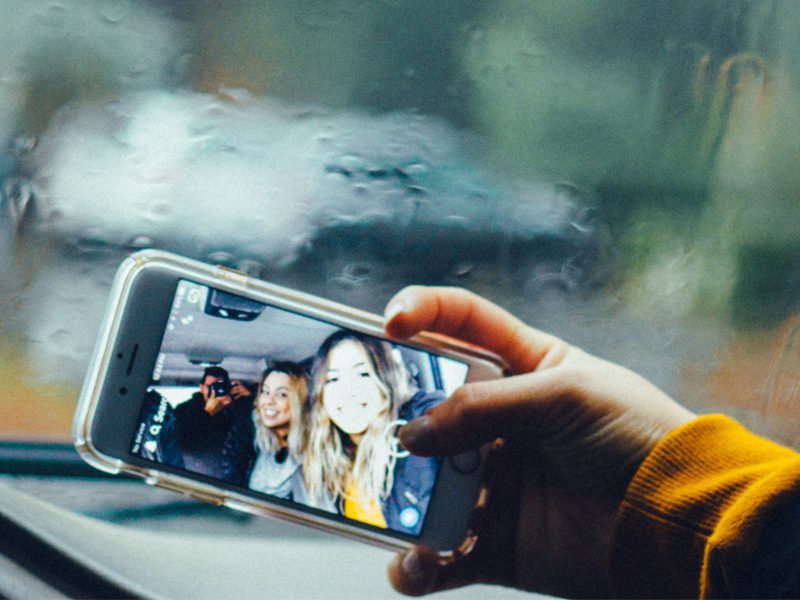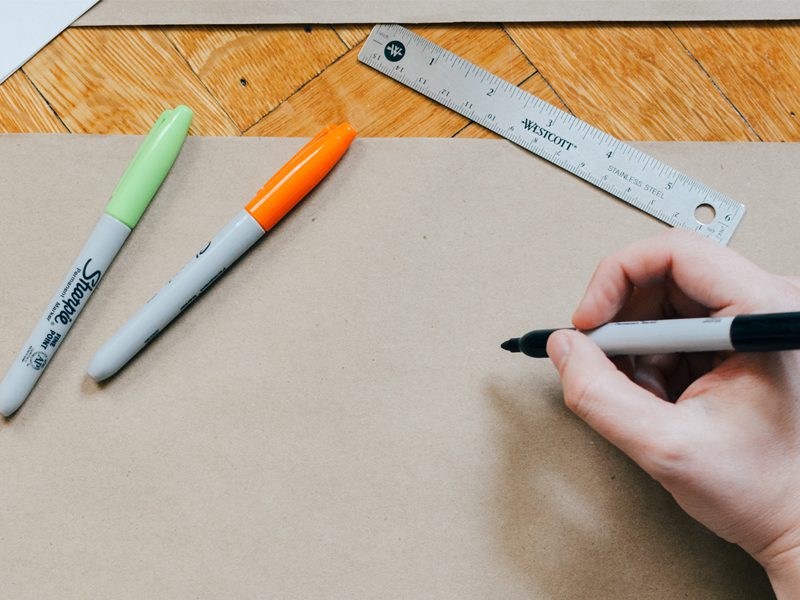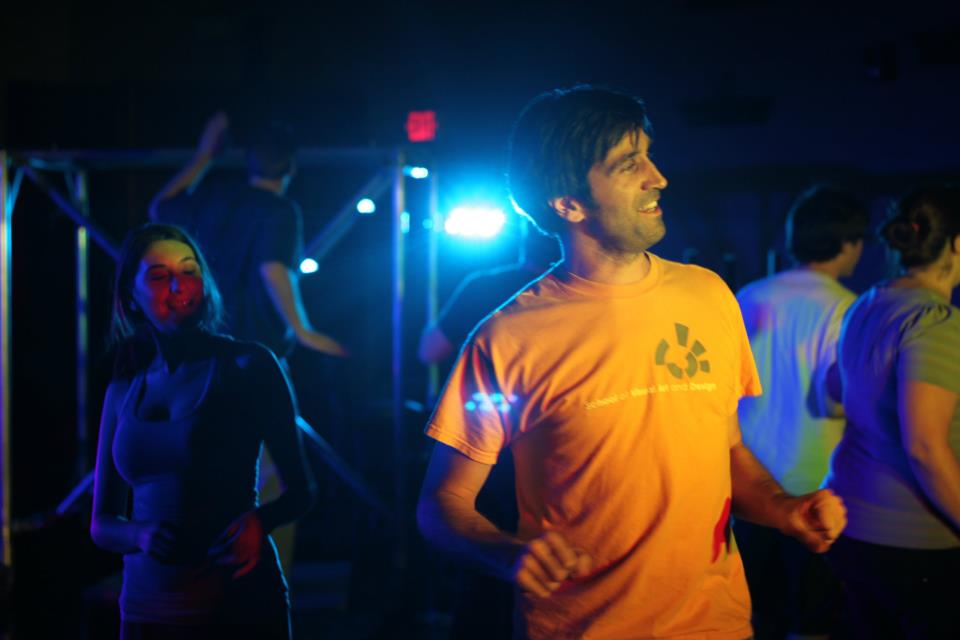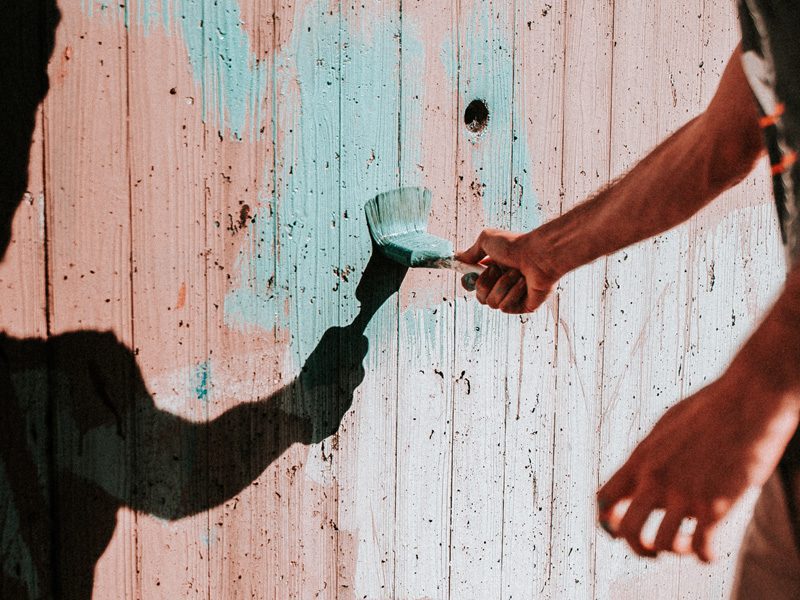Research finds taking and sharing pictures can enhance wellbeing.
For something touted as a simple, modern way to connect, having a social media presence is complex. It can feel like a necessary evil—you want to stay in the loop and see your sister’s cat photos, but it’s easy to get sucked in and stumble upon a friend’s polarizing political discussion, or two, along the way.
The negative side of social media consumption is nothing new. After all, research indicates social media creates unrealistic expectations, makes us depressed, makes us jealous, ruins relationships and takes away our time. But what if these feelings didn’t have to be the case?
Researchers from the United Kingdom’s Lancaster University and University of Sheffield asked the question:
What if taking and posting a picture a day could improve your wellbeing instead of giving you a bad case of fear of missing out (FOMO)?
Lancaster University medical school lecturer Liz Brewster, who co-authored the study with Andrew Cox of the University of Sheffield, initially began to think of the study after participating in a 365-day photo project. She and Cox wondered if they could link the practice to a larger, established body of research related to the benefits of therapeutic photography.
The pair conducted a pair of small-scale studies including “The daily digital practice as a form of self-care: Using photography for everyday well-being,” published in Health in April 2018.
The study monitored adults who regularly used Instagram, Flickr and Blipfoto for two months, and recorded what photographs the participant took, what text was added and how he or she interacted with others on the photo-a-day site. At the end of the observation, participants were interviewed via telephone.
Brewster admits she was surprised by the findings.
“It sounds like a really simple idea to say, ‘Go and take a photograph every day and it will have this positive effect on your wellbeing,’” Brewster said. “But when you talk to people about it, there’s so much more to it that makes it actually quite complicated and to mean a lot to them.”
– Explore the 365 Project, a challenge to document your life with a daily photo, at 365project.org.
– Use hashtags like #365daychallenge, #365challenge or #365photochallenge to share your work and connect with others
Participants reported the exercise to be “a moment to be mindful of themselves” and a way “to really connect to the present moment.” They also talked about things like looking back on good times or bad times that they’d overcome. Overall, they reported improved wellbeing, something that can be difficult to define.
“It’s what helps you to feel that you’re able to cope with the world, to live what you might term ‘a good life,’ to feel like your world is in balance…I think it’s quite different for people,” Brewster said. “But there are probably some common factors in there, things like being able to connect with people, to be able to connect with the world around you and to be aware of what’s in it.”
While Brewster has researched a number of nonmedical creative interventions for mental health and wellbeing and is encouraged by the findings of the study, she doesn’t want the results to seem like a simple cure all.
“It is one tool in the toolbox,” Brewster said. “I wouldn’t say it’s ever going to be a one-size-fits-all with this kind of intervention, but for the people that we spoke to, it definitely had this really positive beneficial effect on their well-being. And I think that it could have an impact on other people’s wellbeing as well.”
San Juan Capistrano-based Board Certified Art Therapist Erica Curtis uses a wide range of materials and means, like photography, to further her clients’ goals. She’s experienced how taking a picture a day can be beneficial to one’s wellbeing by cultivating mindfulness and a positive outlook.
“We have a lot of internal chatter and we’re kind of never where we are; we’re always thinking about where we’re going or where we’ve been,” Curtis said. “By pausing and orienting to, or focusing on, the environment by taking a photograph, we’re allowing the mind to take a break and say, ‘Oh, I’m right here right now.’”
Curtis has taken the practice a step further by asking clients to snap shots of something they find pleasant.
“I don’t necessarily say [to take a picture of] something that makes you happy, because that’s a stretch for them,” Curtis said. “Sometimes just saying, ‘Find something that’s pleasant to look at’…helps them to start to approximate or get closer to that sense of pleasantness in life or at least neutrality…So not only is that for a mindfulness practice, but it’s also to help people cultivate a [more positive] outlook.”
When Curtis mentions a change in outlook, she’s referring to the number of positive thoughts it takes to outweigh our brain’s bias toward negativity. We’re wired to remember negative thoughts for survival, and often positivity can take some work.
Taking a picture of something pleasing can combat these thoughts, she said. Plus, if you share it in an online community, you can combat loneliness, which is gaining more attention as a mental health issue.
“Doing something like a photo a day and then sharing it with a community, whether that’s a community online or someplace else, creates a sense of belonging, creates a sense of purpose. It might even spark a dialogue,” Curtis said. “It might help people who do feel isolated to feel like they are participating in something that’s larger than them, which can be really important for a positive sense of mental health.”
While taking a daily photo and posting is something that can be done independently, organized photo challenges through groups like the 365 Project attract thousands of participants, like Kim Watermeyer from Cape Town, South Africa. Watermeyer found 365 Project in September 2008 after starting her own photo-a-day blog January 1 to chronicle her travels after selling her company.
“I never ever missed a day. Even if it was a quarter to midnight, I would jump out of bed and take a photo of my big toe or something,” said Watermeyer. “It was the discipline that I loved. It kept me focused.”
The discipline of the daily digital exercise changed how she began to see the world.
“I’ve always been a very sensory person and extremely observant. This project made me more so. Everything and anything was a possible photo opportunity, whether it was a weed growing out of a downpipe, or a texture on a rock or a cloud formation,” she said. “This made me realize that there is beauty all around, even in the most mundane.”
Watermeyer’s 365 gallery connected her to a community with similar interests from all around the globe. These online relationships have even culminated in in-person meetups.
“Some of the connections I made on 365 have been quite surreal. I have met up with other 365ers from around the world. Some have come to Cape Town and looked me up, too,” Watermeyer said. “My life has been richer for it. I have new real friends I have met face-to-face and hopefully a bunch more on my next set of travels one day.”


















always i used to read smaller content which also clear their motive, and that is also happening with this paragraph which I am reading at this time.